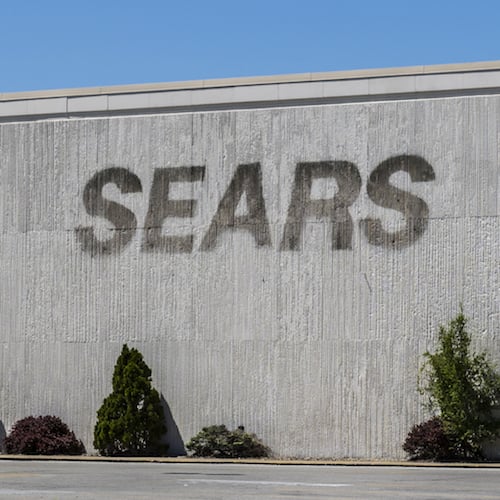

Sears Holdings Corp. (NASDAQ: SHLD) said this morning that it has constituted a special committee of its board of directors to begin a “formal process” to sell just about the only thing left of value the company owns, except its real estate.
The board is beginning this process following receipt of a letter from ESL Investments late last month suggesting that Sears sell off the Kenmore brand and related assets. ESL also indicated it would be interested in participating in those divestitures.
That’s no big surprise. Edward S. Lampert is the CEO of ESL Investments and the CEO of Sears. Of course, the Sears board has created a committee of independent directs to evaluate ESL’s interest and “to actively solicit third-party interest in the [Kenmore brand and other assets] and to explore any other alternatives … that may maximize value for the Company.”
A 2017 study by J.D. Power of consumer satisfaction with a variety of large appliances like refrigerators and clothes washers ranked the Kenmore Elite brand as better than average in a few categories and the Kenmore brand as “about average” in most categories.
By 2015 Sears had fallen behind both Home Depot and Lowe’s as the top retailer for major appliances. Late last year Sears signed an agreement with Amazon that allows the e-commerce giant to flog Kenmore appliances. More than any single thing that probably breathed some life into the brand. The Kenmore brand is probably worth as much to Sears now as it will ever be.
Once Lampert (or another bidder) gets its hands on the Kenmore brand, the only things of value left at Sears will be its inventory and its real estate. The inventory could be sold off in the biggest fire sale ever, and Sears will be left with whatever real-estate it hasn’t already sold to Seritage Growth Properties (NYSE: SRG), another Edward S. Lampert-controlled company that acquired some of the company’s best real estate back in 2015, which it leases back to the company and to other retailers like Williams-Sonoma and Pottery Barn.
Seritage can and has pulled the plug on some Sears stores in order to charge higher rents to new tenants. Sears benefits by taking the opportunity to reduce workers and inventory costs. By shrinking ever smaller, operating costs and revenues fall. Revenues were falling anyway, so that doesn’t matter; stopping the cash bleeding out is more important.
Then what matters is converting as much of what remains valuable at Sears into cash and other assets that ESL can either sell or keep as the whim strikes. At this point, it might take a miracle for Sears to survive until the end of the year.
Of course shareholders like the plan to sell Kenmore. Sears shares traded up nearly 10% just before the noon hour Monday, at $3.76 in a 52-week range of $1.99 to $10.76. The 12-month price target on the stock is $2.00.
For the record, Seritage stock traded up about 0.1% at $37.74. The company’s market cap is $2.1 billion, while Sears has a market cap of $403.8 million.
Sponsored: Attention Savvy Investors: Speak to 3 Financial Experts – FREE
Ever wanted an extra set of eyes on an investment you’re considering? Now you can speak with up to 3 financial experts in your area for FREE. By simply
clicking here you can begin to match with financial professionals who can help guide you through the financial decisions you’re making. And the best part? The first conversation with them is free.
Click here to match with up to 3 financial pros who would be excited to help you make financial decisions.
Thank you for reading! Have some feedback for us?
Contact the 24/7 Wall St. editorial team.



